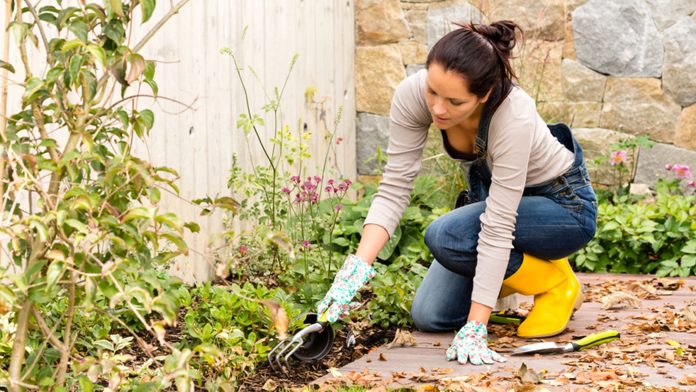If you’ve spent a lot of the summer in your garden you might not be looking forward to the fall. During the fall, flowers can fail to bloom as much as they should, if at all. Some shrubs might not grow so quickly, and other plants may start to die.
However, there is still a lot to do in the garden during the fall. You still need to tend to your plants, water them, pull up weeds, and keep the area tidy. So let’s take a look at how you can look after your garden even when the summer is over.
Sweep Up Fallen Leaves
If a lot of leaves fall on your grass the grass won’t grow well. One of the best things you can do is to sweep the leaves up and dispose of them. Leaves should not ideally be placed on the compost. They can take a long time to break down. Instead, place them in a corner of your yard or garden where they can break down on their own.
If you have small leaves on your lawn mow them into the grass. When you mow them, the leaves will be chopped up into smaller pieces. This process will add a few nutrients to your soil.
Sow Seeds
When the temperature is a little cooler, it could be the perfect time for you to sow some seeds. This is especially the case if there’s a little rain from time to time. Visit your neighborhood nursery to see what seeds are in stock. Your local garden center is more likely to sell seeds that are ideal for your soil than those elsewhere.
Pull Up Weeds
Now is not the time to forget about the weeds in your garden. While they may not be growing as quickly as they were in the summer, they’ll still be growing. Be sure to pull up the weeds and remove the roots as you do. If you leave the roots in the soil the weeds are likely to grow back.
You may find that weeds such as clover and dandelions start to grow quite quickly. As the temperatures start to drop, these weeds could take over. Do what you can to keep them away from your lawn. Spend at least a few hours each week removing the weeds.
Aerate Your Lawn
If your soil has become compacted it’s time for you to aerate it. Do this in high traffic areas. These are areas of your garden that people tend to walk on the most. Aerating your lawn will loosen the soil up and allow more grass and plants to grow.
Other areas of your lawn only need to be aerated every 2-3 years.
Let Your Lawn Grow
During the fall, you won’t need to mow your lawn as much as you had to in the summer. However, when you do mow it, try not to mow it too often. You should also consider raising your mower blade. This will help to keep your lawn from being cut too short.
When your grass is not too short it encourages root growth. The longer the root, the more likely it is that the grass will survive the winter.
Add Mulch to Perennials
If you have perennials in your garden or yard consider adding mulch. Do this only after the ground has frozen. Add a layer of mulch that is 4-5 inches deep. Use bark mulch if you can, and place it over the crown of the perennials. Pay special attention to the perennials that were planted this year and those that are susceptible to frost.
Plant Spring Bulbs
Many people love to plant daffodils, tulips, and other spring bulbs in their gardens. Ideally, these bulbs should be planted in late September/early October. This allows the bulbs to become established in the soil. They may even begin to grow a few roots.
The bulbs need to be in the soil so that they can experience the winter weather. As soon as spring comes around the bulbs may start to grow.
Water Now And Again
It’s likely that you watered your garden fairly often during the summer. Now the fall is here, your garden won’t be as thirsty. If your garden is a little dry, water it once a week. Plants that have sufficient amounts of water are more likely to survive the winter.
As fall approaches, you can still take care of your garden. There are plenty of jobs to be done before the winter arrives. Make sure that you still pay attention to your garden so your plants are more likely to survive the winter months. Use the above tips to help you to keep an eye on your garden and encourage plants to grow when it’s springtime once more.














